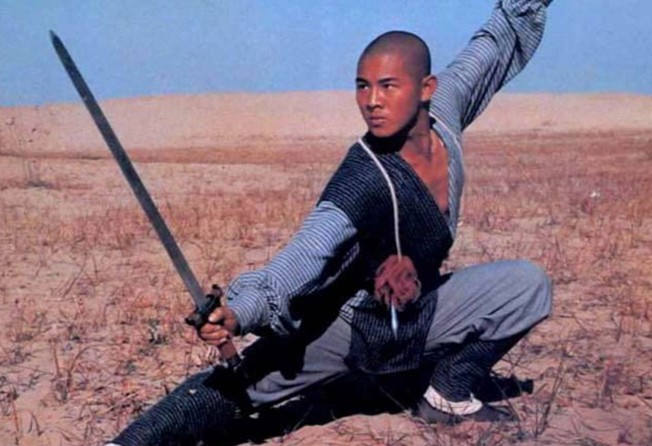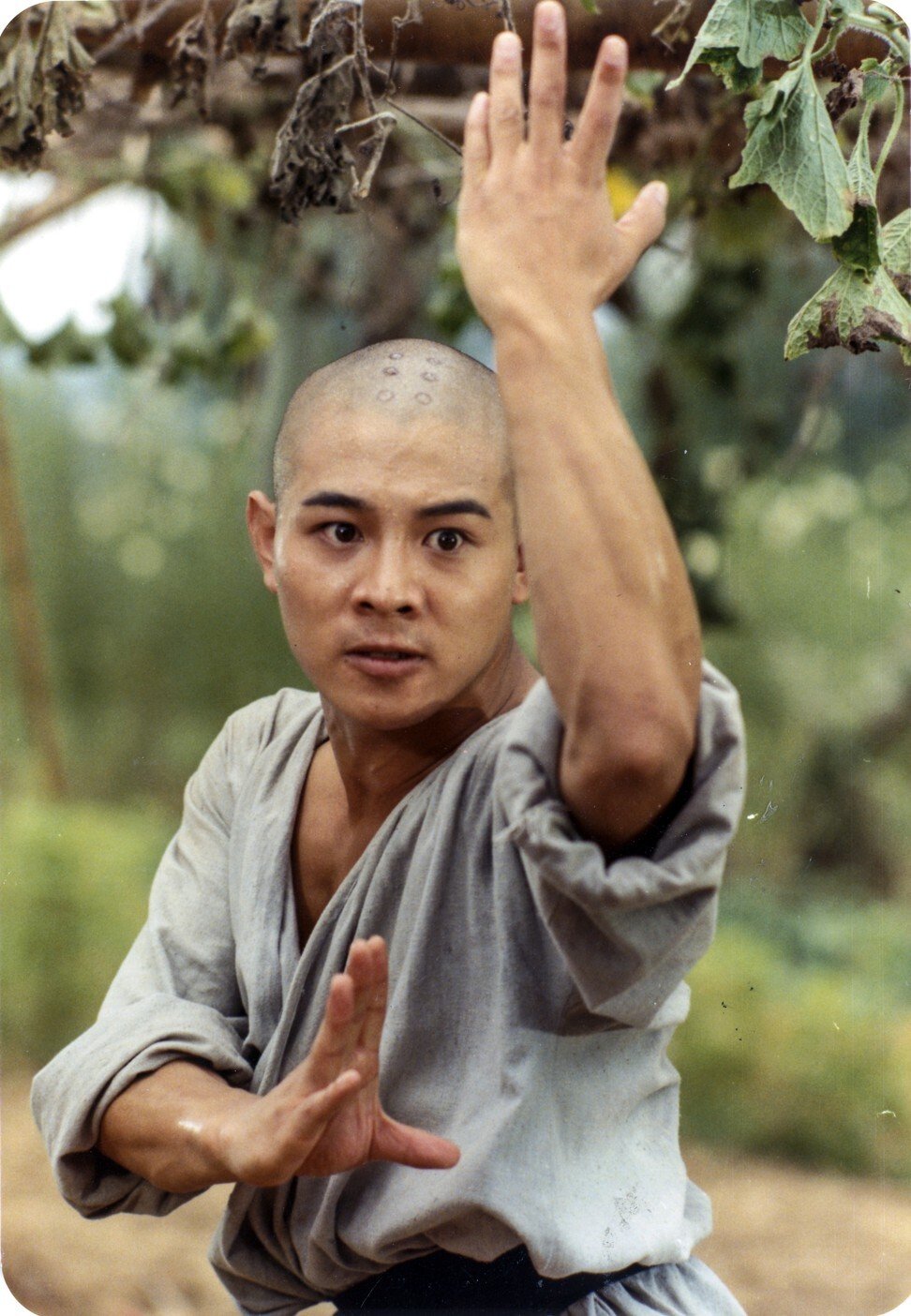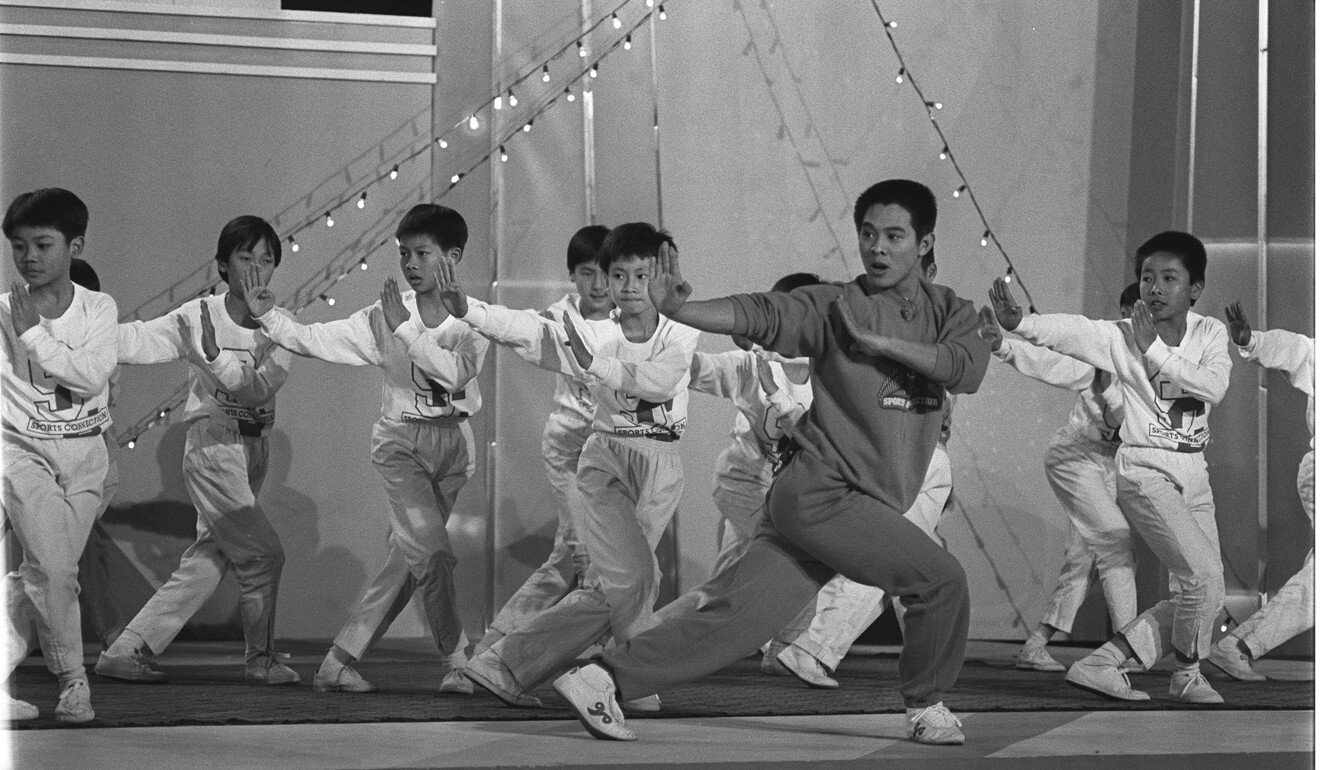What is wushu? How Jet Li studied it and made it famous in Hong Kong martial arts movies
- Wushu was introduced by the Chinese communist government as a way to teach kung fu
- Led by Jet Li and Donnie Yen, wushu hit the big screen during the 1990s Hong Kong martial arts film revival

Wushu comes up a lot in the context of martial arts films, but what does it mean? A literal translation is “military arts”. Today, though, wushu is generally taken to mean the sport version of martial arts that was established in mainland China after the communists took power in 1949.
Martial arts had been encouraged in China during the early Republican era, as a way of showing national pride and as a form of self-defence. After 1949, the Communist Party discouraged kung fu, and brought it under the umbrella of the state in 1958.
Martial arts were reorganised as non-contact sports in which martial artists were judged on their skill at showing the forms, rather than fighting. A type of sparring, called sanda, did return to wushu over the years, but that is a modern fighting style which is sometimes compared to Muay Thai.
Wushu stylists – they are often called stylists rather than fighters – learn elements of many traditional martial arts styles. The emphasis is on northern martial arts rather than southern kung fu, and styles include Long Fist, Eagle Claw (a popular style for villains in Hong Kong films), and tai chi.
Wushu performers did not get much representation in Hong Kong films until the martial arts revival of the 1990s. In the previous two decades, directors like Lau Kar-leung had sought to authentically represent southern styles like hung ga on screen.
Tsui Hark, always looking for something new to excite audiences, used wushu in the Once upon a Time in China series. Its acrobatics, spins, and high kicks were the perfect look for the new fantastique films like the Swordsman series.
Donnie Yen Ji-dan trained in wushu, but the most famous wushu performer is Jet Li Lianjie, whose work for Tsui showed wushu to good effect.
Li’s wushu can be seen more clearly – without Tsui’s fast camera movements and quick edits – in Shaolin Temple, Kids from Shaolin, and Martial Arts of Shaolin, a trio of films Li made in China in the 1980s during his first bout of stardom. The third film, directed by Lau Kar-leung, mixes wushu with defined fighting styles such as Mantis Fist.
Li began studying wushu at the age of eight, when the Chinese authorities, noting his athletic potential, asked him to attend the Beijing Sports and Exercise School. “In 1971, I didn’t know what wushu was, and that you could learn it,” Li said in an interview.

“The school students were divided into groups … one group would learn football, one group would learn gymnastics, a third group would learn wushu … it was not predetermined what group you would go in. It was just coincidence I went into the wushu class. But by the time I was 11, I was representing my country all over the world.”
Li proved to be a wushu prodigy. He was crowned all-around youth champion in the national wushu competition aged 11, and won the men’s gold medal at the national championships five years in a row, before quitting the sport in his teens.
Li performed at a wushu exhibition in Hong Kong in 1974, and was asked by a Hong Kong film producer if, when he was older, he would be interested in going into the movies as a kung fu star. Being a fan of Bruce Lee, who Li says he saw in Fist of Fury in 1972, he liked the idea. Li says that every time he gave a wushu exhibition in Hong Kong he was asked the same question.

Li’s first movie was Shaolin Temple, a film shot in China but produced by the small Hong Kong company Chung Yuen Film Company, which had signed Li to a three-film contract. Shaolin Temple was shot on location at the famed Shaolin Monastery, which was in decline due to the Cultural Revolution.
Although Shaolin Temple was a Chinese film, it had an experienced Hong Kong director in the form of Cheung Sing-yim. Cheung had co-directed the The Jade Bow in 1966, the Cantonese martial arts film which brought the talents of choreographers Lau Kar-leung and Tong Kai to public attention.
As Chung Yuen Film Company was a small outfit, it could not afford well-known actors, so Cheung cast wushu experts from China as they would not need to be trained. Along with Li, these included Woo Gin-keung, the national wushu champion of 1981 and 1982, Yu Cheng-hui, a renowned master of the ancient “two-handed sword”, and Yu Hai, an expert in Mantis-style kung fu.

The company could not afford to hire a martial arts choreographer, so the cast handled the choreography themselves. “The director told us the basic story and we used what we had learned to design the fight scenes,” Li said. The camera movements are slow and the takes long, and the result is a dazzling exhibition of wushu performed by a large cast of experts.
The film was a big hit in China and did well in Hong Kong. Chung Yuen produced a sequel of sorts, Kids from Shaolin. This featured Li, Woo, Yu Cheng-hui, and Yu Hai, along with a cast of child wushu experts, as different characters in a film which bore no relation to the first. Again, the wushu was exemplary.
The second sequel, Martial Arts of Shaolin, is of more interest to martial arts fans. The movie was directed by Lau Kar-leung and choreographed by Lau and his brothers. The movie again features wushu, but Lau also brings in more distinct styles, including a scene where southern hung ga kung fu is matched against northern styles – a theme which runs through the film.
The highlight of the film is a battle which features Yu Hai as a monk using Mantis style against the expert swordsmanship of Yu Cheng-hui, who plays the film’s villain.
“Martial arts is often a bit soft when choreographed by wushu stylists [from China], so Lau and his team put a stronger edge on the choreography than it would otherwise have had. The movements look less like the actors trying to perform sets and forms,” writes martial arts expert Blake Matthews.
In this regular feature series on the best of Hong Kong martial arts cinema, we examine the legacy of classic films, re-evaluate the careers of its greatest stars, and revisit some of the lesser-known aspects of the beloved genre. Read our comprehensive explainer here.
Want more articles like this? Follow SCMP Film on Facebook